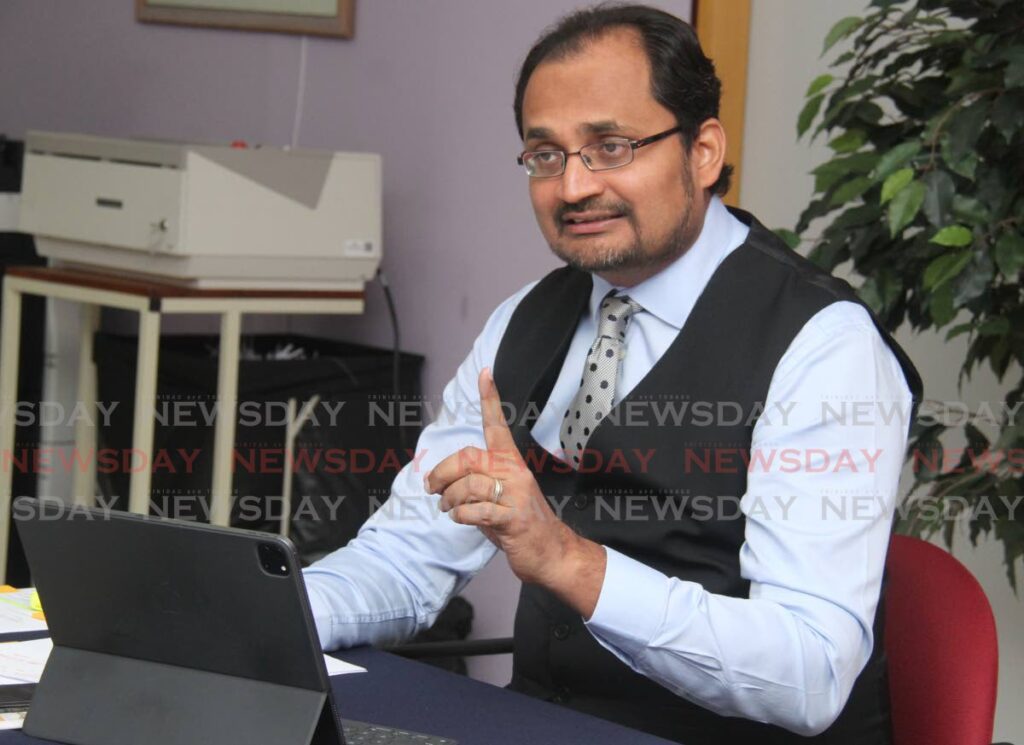Pan and politics

DINESH RAMBALLY
“Trinidad is pan. Pan is African. Why does this fact find so much opposition ridicule?”
– Leroy Clarke, Express, February 6, 1998
THE ERUPTION of controversy and racial animus triggered by the Prime Minister’s out-of-nowhere announcement about placing the steelpan on the coat of arms has apparently served its purpose. Now no one is thinking about Chinese contractors and the HDC, or missing billions from the national accounts, or the rising tide of horrific murder.
Nonetheless, this issue, symbolism, is important, and is a device which has been used by the PNM for most of its history. Symbols are a special language. Images, arranged in a particular way, are enduring and speak more eloquently than hundreds of thousands of words. Particularly when a nation is being defined, symbols, which will last generations and be repeated endlessly, become of enormous importance.
On the coat of arms, symbols define not just what Trinidad is, but also who is a Trinidadian; its currency is essence, not materiality. The trident did not originate in Barbados, but it’s on the flag. The British coat of arms has a lion and a unicorn. Lions originated in Africa. (About the origin of unicorns, the debate rages.) Thus the arguments about Trinidad being the point of origin of the steelpan, while tassa (which has been suggested as a co-symbol) originated elsewhere, are, to use a legal term, disingenuous.
So much for the "authenticity” argument, and its proponents know full well this is not the issue. The issue might be called “symbolic capital.” The “branding” of TT, from independence to the turn of the century, had been deliberately African-centred. Indians were deliberately erased, mentioned as a footnote. This is not in debate. The late Gordon Rohlehr, in his book A Scuffling of Islands, is among many scholars and researchers, local and foreign (like Ivar Oxaal, Selwyn Ryan and others), who acknowledged this obvious fact.
This desire to define Trinidad as the property of one ethnic group intensified when the UNC came to power in 1995. The quote above this article from the late Leroy Clarke, “master artist,” a major spokesman and walking icon for the black population, was one example of the assertion of Africanness from an endless stream. This was a continuation of politics by other means, and it continues to the present.
But Clarke was half-right. That the steelpan is a creation of the black urban lower class is beyond debate. The major scholars of the steelpan, Dr Kim Johnson and Stephen Stuempfle (to name two), both agree in their books (From Tin Pan to Taspo, and The Steelband Movement). This is complemented by a large body of work which makes the steelpan central to the Carnival, and Africa central to Carnival. A good synopsis of this is the collection of essays, Culture in Action, The Trinidad Experience, which featured contributions from all the major ideologues. There is also the more recent High Mas by Kevin Adonis Browne.
Having established that the steelpan and the Carnival are deliberately described as African in nature, we can return to the symbolic elements, and the general dishonesty of this false "debate." I want to make it abundantly clear that the steelpan belongs to all Trinidadians/Tobagonians. I love it. But for those who may disagree, they must admit that at this political moment it is convenient to say the pan is Trinidadian/Tobagonian and belongs to all.
In almost all arguments so far, Lennox Mohammed and Jit Samaroo are named as prominent figures in the steelpan sphere. I would add Johann Chuckaree to this. Indians do play pan, the national musical instrument. It is already being taught in some Sanatan Dharma Maha Sabha schools and I dare say that by the year 2028, Maha Sabha students will dominate the versatility of the instrument on the national landscape. But even though Lil Nas X and Beyonce have recently released country and western albums in the US, country and western music is not claiming to be black music.
But this is the steelpan as a musical instrument. What the Prime Minister and his apologists do not acknowledge is that the steelpan is also as a political instrument, more specifically, a litmus test. If you don’t like pan, you are not a “real” Trinidadian. This is a crude disguise for the race argument. We see it in the response to some people, mainly Indians, who asked that the tassa drum be also included on the coat of arms, and being rejected on the grounds of ostensibly indigeneity, which I’ve already dispensed with.
But in the end, this is all froth. The Prime Minister, again, has reached into his bag of tricks and pulled his only trick: the race card. And it has worked. In the meantime, the egregious issues raised by the constitution committee’s report remain unquestioned. I will turn to this in a later article.
Dinesh Rambally is the MP for Chaguanas West

Comments
"Pan and politics"